NEWS: Voucher program for special education on eve of codification
BRIEFS: Amendment stalls House progress on budget
CALENDAR: “Dismemberment” bill on special order
COMMENTARY, Brack: Let’s seize the rudder to thwart ambivalence, apathy, neglect
SPOTLIGHT: S.C. Senate Democratic Caucus
MY TURN, Mauldin: Public School Teachers are stewards of our future
FEEDBACK: S.C.’s laudable levels of transparency
MYSTERY PHOTO: Top of the building
S.C. ENCYCLOPEDIA: Plantations and the plantation system
NEWS
NEWS: Voucher program for special education on eve of codification

By Lindsay Street, Statehouse correspondent | A voucher program for special education could expand and gain more accountability as lawmakers seek to transform what has been an ongoing annual proviso into a law that doesn’t need to be renewed every year.
Since the 2013, state lawmakers have included a proviso in the state budget that enabled tax credits for a scholarship fund and tuition assistance for students to attend private schools that can better suit their special needs. In 2018, this voucher program, which is known as Exceptional SC, has served nearly 2,000 students.
School-choice advocates, including the program’s nonprofit director, say codifying the program doesn’t necessarily mean more state voucher programs are on the horizon. But South Carolina Education Association President Bernadette Hampton said it “definitely opens the door to expanding voucher programs across the state.” SCEA opposes voucher programs that use public dollars as scholarships for private schools because they say the practice drains money away from public education.
‘A life saver’
For Traci Weldie of Simpsonville, Exceptional SC has been “a life saver” for her son George, 16 and her family. George has attended Hidden Treasure Christian School in Taylors for three years. The Exceptional SC scholarship pays for about 30 percent of his tuition fees, and Weldie said they still need to look to friends and family to afford his tuition.
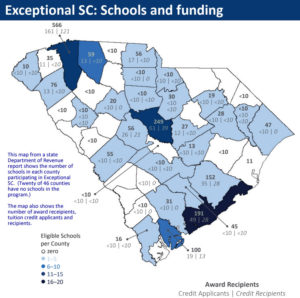
“George has a hope now that he will be able to get a job someday and he will be able to with some assistance live on his own and it’s all because of going to this particular school,” Weldie said.
She said every year as the state legislature finalizes the budget, her family is nervous the program may not continue or may not reauthorize George’s school.
“We want to be able to commit to the school and to George that this is where he will be for the next several years. Every year about this time, our family is under a tremendous amount of stress figuring out how we are going to send him to that school again,” she said. “I’m very encouraged that this is something that would be made into law … Making this into a permanent law would only benefit everyone.”
Weldie also said the increase in the state’s cap on tax credits, from $10 million to $12 million, would help more students like her son.
‘Legislators get it’
The bill was approved unanimously Feb. 16 in the S.C. House. On Wednesday, the Senate Finance Committee gave unanimous approval to send the bill to the floor. The bill now is on the Senate consent calendar, meaning there is no one opposed to the bill, blocking it from a vote.
 In conjunction with the state, Exceptional SC offers state tax credits for donations or tuition. For example, if a person donates $100 to the scholarship fund, then he or she will receive $100 off of whatever is owed in state taxes, though the person cannot be reimbursed for more than they owe. The tax credit is currently capped at $10 million. The House extended the credit to $11 million, but the Senate amended to extend it to $12 million. The program also allows parents to receive tax credits for tuition paid if they do not receive an Exceptional SC scholarship. That credit is capped at $2 million in the current budget year and in the proposed bill.
In conjunction with the state, Exceptional SC offers state tax credits for donations or tuition. For example, if a person donates $100 to the scholarship fund, then he or she will receive $100 off of whatever is owed in state taxes, though the person cannot be reimbursed for more than they owe. The tax credit is currently capped at $10 million. The House extended the credit to $11 million, but the Senate amended to extend it to $12 million. The program also allows parents to receive tax credits for tuition paid if they do not receive an Exceptional SC scholarship. That credit is capped at $2 million in the current budget year and in the proposed bill.
Longtime school-choice advocate and former S.C. Republican Party leader Chad Connelly took the helm of the nonprofit last fall. He called the codification “a bipartisan issue.”
“Senators and House members realize special-needs kids need a special education that fits their learning style,” Connelly said. “We’ve had a misty-eye kind of feeling going through these committees and hearing lawmakers speak so highly of the program … A lot of the legislators get it.”
‘Make this thing permanent’
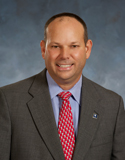
During a Feb. 7 House Ways and Means Committee meeting, Chairman Brian White, R-Anderson, said funding the tax credit by proviso creates uncertainty among parents and guardians whose children benefit from attending private schools.
“It’s time to make this thing permanent,” White said. “You can’t just disrupt them.”
During the Senate Finance Committee meeting this week, Sen. Vincent Sheheen, D-Kershaw, spoke in favor of the program. Sheheen worked with Republican Sen. Larry Grooms, R-Berkeley, to further amend the House’s version to create more accountability.
“There is some good going on in this program and we need to make sure it’s accountable like any other program,” Sheheen said.
S.C. Senate Minority Leader Nikki Setzler, D-Lexington, praised the bipartisan work.
“They worked across party lines for something that works for the state,” Setzler said in the Finance Committee meeting.
More accountability
The S.C. Department of Revenue provides oversight on the program. The agency works with Exceptional SC on record-keeping and disbursing grants. It also oversees tax credits for donors and implements the process for parents to receive tuition tax credits.
Students awarded a scholarship must attend a school that the Education Oversight Committee (EOC) has approved for program participation. There are 114 schools approved in the state. [This report highlights the schools and amount of money they receive.]
Under the current method of funding, guardians and schools have been left on edge every year to know whether their school will remain in the program, EOC Executive Director Melanie Barton said. With codification, schools will be approved in March every year, instead of May or June.
“It’s been very chaotic for the schools and the EOC … This will give the public the info they need earlier in the year,” Barton said.
Barton said that under codification, the state will also begin to assess individual student performance, something that is not done currently. Private schools do not use state testing and can only provide national tests that aggregate results, Barton said. Once the bill has passed, the EOC will work to show individual gains under the program, looking to states like Florida, which has offered a school-choice voucher for special-needs children since 1999.
Slippery slope: More vouchers on the horizon?
In addition to vouchers for special-needs children, Florida also offers vouchers for low-income students to attend private schools. It’s Florida’s example that has advocates like Hampton worried.

“We have a responsibility to provide great public schools for each student in South Carolina so they have every opportunity to succeed. Vouchers do the opposite and hurt our students, in particular those with special needs, by taking already scarce funding from public schools and giving it to unaccountable private schools,” Hampton said. “Ultimately, we should focus on investing in public schools, where 93 percent of South Carolina’s children go.”
Ashley Landess, executive director of S.C. Policy Council, a conservative think tank, said that while the credit is a good start and benefits many families in the state, it doesn’t go far enough and said she wants to see expanded vouchers in the state.
“This is a very limited tax credit, possibly the most limited tax credit the legislature has ever done,” she said. “Is that fair? Is it fair for some children to have choice and others don’t?”
While Connelly said he’s “always been really involved in dollars following the kid,” he didn’t think codifying South Carolina’s voucher program signals a warming to expanded voucher education programs in the state.
“This is not the same lane, honestly,” Connelly said. “This is so specialized and nuanced; it stands alone.”
- Have a comment? Send to: feedback@statehousereport.com
BRIEFS
BRIEFS: Amendment stalls House progress on budget
![]() Staff reports | House Republican leaders sought to insert a last-minute amendment to the $8.2 billion state budget, which has already cleared the body and passed in the Senate, but the plan has been stalled by Democrats.
Staff reports | House Republican leaders sought to insert a last-minute amendment to the $8.2 billion state budget, which has already cleared the body and passed in the Senate, but the plan has been stalled by Democrats.
This is the House’s final opportunity to amend the budget before kicking it back over to the Senate. This week, House leaders proposed spending $26.3 million to make public schools and prisons safer. But the plan included another $54 million for a forensics lab for state police, and Democrats balked, in part because they didn’t learn about the 38-page proposal in advance. Read more.
Debate is expected to resume Tuesday. After the House finishes with amendments, it will ask for concurrence with the Senate. If the Senate does not concur, as expected, then the budget goes to conference where amendments will be hashed out among select members of both bodies.
Here are some more items that happened this week:
Nuclear rate cut. The House rejected a Senate bill that sought to cut rates for S.C. Electric & Gas ratepayer by 13 percent, instead of the full 18 percent that is charged for the two nuclear reactors that remain unfinished but incurred $9 billion in construction costs. House members said they refused to vote for a bill that would not give full relief and would likely be vetoed by the governor, who also said he would veto anything short of full relief. If it had passed, it would have been the first piece of legislation passed into law since the nuclear fiasco last year. Read more.
Children’s advocate. Children in South Carolina will have a new voice in state government. A bipartisan bill that establishes a Children’s Advocate in the state cleared both bodies this week. The advocate is to be a watchdog for the state’s many children services.
S.C. economy lagging. South Carolina is currently ranked 7th in the United States for its economic performance but 33rd for its economy. Economic performance includes backward-looking factors such as Cumulative GDP Growth, Cumulative Domestic Migration and Non-Farm Employment Growth. The state’s poor economy ranking comes from forward-looking factors such as income tax progressivity, property tax burden, debt-to-revenue for state government, and more. Read the study here.
Richardson tapped for federal court. Assistant U.S. Attorney Jay Richardson of South Carolina has been picked to fill a vacancy on the 4th U.S. Circuit Court of Appeals. The 4th Circuit includes South Carolina, North Carolina, Maryland, Virginia and West Virginia. Richardson is best known as the prosecutor of Emanuel AME murderer Dylann Roof. Read more.
Condon faces tough questions. Gov. Henry McMaster’s nominee to head state-owned utility Santee Cooper, former S.C. Attorney General Charlie Condon, faced tough questions from a Senate panel this week. Condon stressed transparency and no meddling in privatization considerations for the utility. Read more.
Templeton’s choice. GOP gubernatorial candidate Catherine Templeton of Mount Pleasant unveiled a new campaign ad touting her opposition to abortion, but it has some people scratching her head. According to this story, she was pregnant with twins when a doctor told her she might have to abort one to save the life of the other and that more tests were needed. In the ad, she said no tests were done because she believed “they were ours to protect as long as he [God] would allow us.” Pro-choice advocates might point out that Templeton made a choice to keep the children, something threatened by restricting abortion.
CALENDAR: “Dismemberment” bill on special order
![]() Staff reports | A House bill seeking to prohibit so-called “dismemberment” abortions in the state has been placed on special order in the Senate, meaning it will take precedence over any other bill.
Staff reports | A House bill seeking to prohibit so-called “dismemberment” abortions in the state has been placed on special order in the Senate, meaning it will take precedence over any other bill.
The move could mean that the Senate will be primarily focused on this contested bill for the remainder of the session. Women Rights and Empowerment Network of South Carolina said the bill aims to end access to a common method of abortion. In an email blast to supporters, WREN called the bill “dangerous” and said it could limit care for women.
H. 3548 cleared the House 83-17 March 30. If a vote is taken in the Senate, a simple majority is needed to put it on the governor’s desk.
Here are more items of interest coming up:
Teacher of the year. School district’s nominees for Teacher of the Year are being announced. A program next week will announce the top teacher in the state. The event is 6-9 p.m. May 2 in Columbia. Click here for more information on the event.
Ports authority appointments. House and Senate members will consider two appointments to the State Ports Authority 10 a.m. May 1 in room 207 of the Gressette building. Agenda here.
BRACK: Let’s seize the rudder to thwart ambivalence, apathy, neglect

By Andy Brack, editor and publisher | With the annual legislative session roaring to a close, there are a multitude of unresolved issues, as usual.
 Most prominent is the state’s nuclear mess, a $9 billion fiasco stemming from a nuclear plant project that failed last year without generating a watt of power. Currently, the state House and Senate are mired in working out differences in how to deal with this issue that has consumed hours and hours of legislative time.
Most prominent is the state’s nuclear mess, a $9 billion fiasco stemming from a nuclear plant project that failed last year without generating a watt of power. Currently, the state House and Senate are mired in working out differences in how to deal with this issue that has consumed hours and hours of legislative time.
Years ago, the General Assembly wrote a law that has allowed SCE&G, the majority partner in the unsuccessful Fairfield County project, to charge fees to ratepayers to help pay for the facility as it was being built. But now with the abandoned site being little more than humongous chunks of concrete, there’s still debt – and the utility wants to keep charging, claiming it might go bankrupt otherwise.
Not so fast, the legislature has said for months, pounding on bully pulpits that the gouging of ratepayers has to stop. At issue now in these waning days of the session is whether to cut the full amount of extra payments by 18 percent, an amount sought by the House and Gov. Henry McMaster, or go with a 13 percent cut, which the Senate prefers because it doesn’t want SCE&G to face financial peril.
A compromise must be forged. We say split the difference at 15 percent. Otherwise, there may be nothing to show for a nuclear debacle that has sucked the life out of a host of other challenges, such as education, health care and poverty, that lawmakers should have been dealing with.
House members want a deal. Otherwise, they’ll face angry voters at the polls in November. But if a deal isn’t hammered out, the state Public Service Commission will decide on the issue at the end of the year when it also considers a multi-billion-dollar pitch by Dominion Energy to take over SCE&G and its parent, SCANA.
Let’s now shift to some other topics:
Is it only me? State officials announced all sorts of emergency measures to improve security after seven inmates died in a bloody melee at Lee Correctional Institute a few days back.
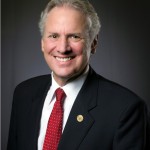
McMaster issued an emergency order to allow the understaffed state Department of Corrections to stop following state hiring regulations so it can boost pay and hire staff more quickly to fill 600-plus openings at state prisons. Makes sense.
But notice this paragraph from a story in The State newspaper about the order:
“McMaster’s order also allows the prisons agency to avoid the state’s lengthy procurement system to buy and install $7 million in netting at 11 higher-security prisons that could stop contraband from being tossed over prison fences.”
What? State lawmakers and corrections officials have known for years that prisons have been a powder keg waiting to explode. What happened in Bishopville wasn’t surprising. But the story suggests the state knew of a way to improve security but hadn’t done it because of its own procurement rules. How much sense does that make?
Unfortunately, this is typical of South Carolina leadership. There has to be a horrible problem or a really squeaky wheel before anything gets done. Witness disastrous property tax reform, the years it took to pass a gas tax people wanted for better roads, and now the challenges with holding utilities accountable for their failures.
Be careful about the development you hope for. Overdevelopment in popular parts of the state is another looming challenge.
Think about the South Carolina you love. Is it a complex of new buildings? A four-lane expressway? A skyline of cranes? Traffic congestion?
No. It’s a park, a beach, a lake, the great outdoors. But as more people move into South Carolina, particularly in the metros, there’s so much bowing to the altar of rampant development that we’re slowly eroding what’s special about South Carolina.
All of these things – unsafe prisons, failing infrastructure, leaders who don’t know how to lead, unmet challenges that spin out of control– illustrate the need for comprehensive planning at state and local levels.
Let’s seize the rudder. Let’s shout for leaders to stop dawdling and plan our future instead of letting it be thrust onto us through exploitation, neglect, ambivalence and apathy.
- Have a comment? Send to: feedback@statehousereport.com.
SPOTLIGHT
SPOTLIGHT: S.C. Senate Democratic Caucus
 The public spiritedness of our underwriters allows us to bring Statehouse Report to you at no cost. This week’s spotlighted underwriter is the S.C. Senate Democratic Caucus. Organized almost 25 years ago, the Caucus has played an important role in many of the historic issues facing our state. As a vibrant minority party in the Senate, its role is to represent our constituents and present viable alternatives on critical issues. The S.C. Senate Democratic Caucus remains a unique place for this to occur in our policy process.
The public spiritedness of our underwriters allows us to bring Statehouse Report to you at no cost. This week’s spotlighted underwriter is the S.C. Senate Democratic Caucus. Organized almost 25 years ago, the Caucus has played an important role in many of the historic issues facing our state. As a vibrant minority party in the Senate, its role is to represent our constituents and present viable alternatives on critical issues. The S.C. Senate Democratic Caucus remains a unique place for this to occur in our policy process.
- Learn more about the Caucus at: scsenatedems.org.
MAULDIN: Public school teachers are stewards of our future
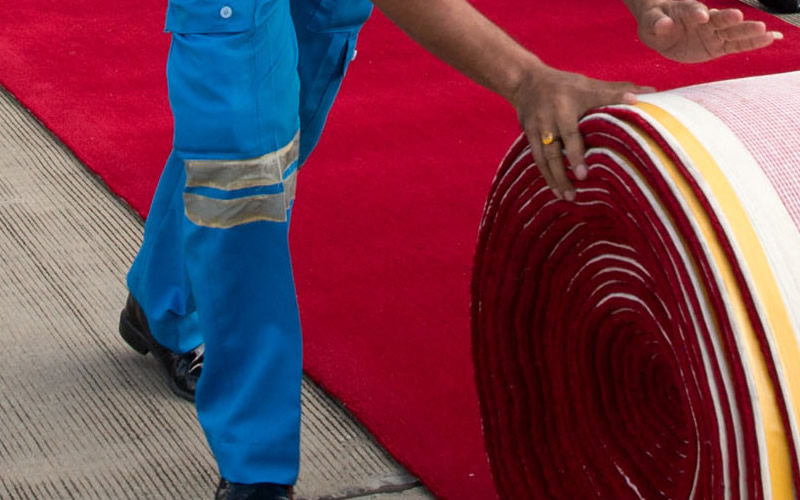
By Caroline Mauldin, special to Statehouse Report | The lights are low as 700 people collectively hold their breath. A drum rolls, followed by the crinkle of an envelope opening. “And the winner is…!” Gasps and applause fill the room as the audience jumps to their feet in pride, and the winner shuffles up to the stage in disbelief.
No, this is not a scene from the Academy Awards in Los Angeles, but one much closer, and more significant to our state: it is South Carolina’s Teacher of the Year gala, held every May in Columbia.

Just over 10 years ago, a group of business leaders recognized a simple fact: if we want to recruit top talent to teach in South Carolina’s public schools, we need to show that we value teachers. It was from this basic idea that South Carolina Future Minds, a statewide nonprofit, was born and exists today. Since then, we have worked with leading companies, like BMW and Bojangles’, to throw a red-carpet celebration honoring some of South Carolina’s community heroes: our public school teachers.
The evening is a highlight for anyone remotely invested in South Carolina’s public schools: for one night, legislators, business executives and civic leaders see teachers as their students do every day: inspirational, committed, passionate role models who are guiding us into the future.
South Carolina’s public school teachers are indeed stewards of our future. By fostering young minds to be critical and creative thinkers, they are preparing an agile workforce that will be able to adjust and thrive in a changing economy. By showing up every day for our children, they are pillars of every community in the state, especially those that are increasingly under-resourced and struggling to survive. And by choosing a career of service and leadership, they are doing more to ensure the state’s prosperity than most—and certainly more than we give them credit for.
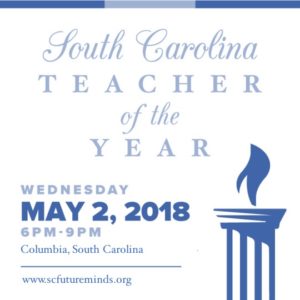 South Carolina can and should be proud of our public school educators. We should also be proud of how we celebrate them at the Teacher of the Year gala every May. What we need to work on is how we, as a society, treat them the rest of the year.
South Carolina can and should be proud of our public school educators. We should also be proud of how we celebrate them at the Teacher of the Year gala every May. What we need to work on is how we, as a society, treat them the rest of the year.
A recent study shows that teacher salaries have actually declined in past decades as cost of living has increased. In South Carolina, we’ve seen a 6 percent decrease since 2000, whereas salaries for other college graduates are increasing. Meanwhile, our legislature has set a lower starting salary than those found in neighboring North Carolina and Georgia, and our average teacher salary lags behind the Southeastern average. All this—even as our state experiences steady economic and population growth.
Of course, salary isn’t everything, particularly for a segment of the workforce that feels called to serve their communities. Most educators will tell you they don’t do it for the money; they do it for the kids.
But from the perspective of supply and demand, consider this: what happens when you start with a statewide teacher shortage (500-plus vacancies in the 2017-18 school year), add a growing student population with increasingly diverse demands, and decrease the number of new teachers entering the profession, as another recent study has shown?
Adam Smith, father of the free market, would point to the invisible hand: increase supply via compensation or other competitive incentives in order to bring equilibrium back. Of course, government-run sectors, like the public education system, do not represent a free market; but that doesn’t mean we can’t learn from its basic principles.
The challenge, of course, is convincing the powers-that-be of the urgency of our teacher crisis, and the bottom line for them is this: we are limiting our collective potential by shortchanging our teachers today.
South Carolina is fortunate to have a strong business community that recognizes the critical role of educators in our society. Many of them will come together next week as we crown the 2019 South Carolina Teacher of the Year. The evening will be unforgettable to all those we honor that night; but, for my part, the work will not be done until South Carolina’s policymakers follow our lead and value teachers all year long.
Caroline P. Mauldin is the executive director of South Carolina Future Minds, a statewide organization investing in public education as a driver of economic and social progress. She is a native of Columbia and currently resides in Charleston.
- Have a comment? Send it to: feedback@statehousereport.com.
FEEDBACK
FEEDBACK: S.C.’s laudable levels of transparency
To the editor:
On April 25, the Public Interest Research Group published a detailed analysis and comparison of the transparency and availability of public information concerning expenditures by the governments of all 50 states.
I hope I may suggest that document should be of the greatest interest to all who wish to study and promote good governance in South Carolina. While acknowledging there is much work to be done by almost every state, the compilers noted that South Carolina is one of only three or four states performing to a complete standard of transparency in several important categories.
I hope and believe many of my former colleagues, and others who admire and support professionalism and effectiveness in public service, will wish to congratulate Comptroller General Richard Eckstrom and his staff and many others in supporting agencies who have helped to bring about this most promising and positive result.
— Dale M. Rhodes, C.P.A., Richmond, Va.
Send us your thoughts. We love hearing from our readers and encourage you to share your opinions. But you’ve got to provide us with contact information so we can verify your letters. Letters to the editor are published weekly. We reserve the right to edit for length and clarity. Comments are limited to 250 words or less. Please include your name and contact information.
- Send your letters or comments to:feedback@statehousereport.com
MYSTERY PHOTO
MYSTERY PHOTO: Top of the building
This week’s mystery focuses on the top of a South Carolina building. That’s the only clue you get. Send your best guess – plus your name and hometown – to feedback@statehousereport.com. In the subject line, write: “Mystery Photo guess.”
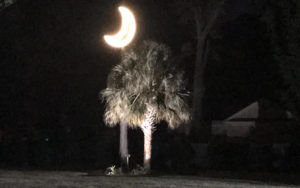
Our previous Mystery Photo
Retired Army Col. Barry Wingard of Florence sent in the mystery published April 20. It befuddled many, who offered great guesses of locations in Beaufort, Dillon, Myrtle Beach and James Island.
Alert sleuth Jay Altman of Columbia also had no solution for the mystery, until he drove past the location by coincidence. The photo is on Cherokee Road in Florence near Five Points and shows a shape of a white crescent moon over two palmettos, a scene similar to the state flag.
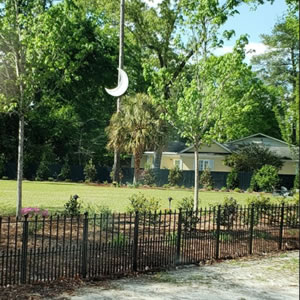
Wingard expounded that the area is a tribute that a Florence resident created for his late wife as a small private park and garden for all to visit. “The signature item is a crescent and palmetto that is lit up at night, at the corner of Cherokee Road and Garland Avenue in Florence.”
Congratulations to two others who correctly identified this perplexing mystery — David M. Taylor of Darlington and Bryan Couch of Florence. Taylor added this thought: “Also, you may remind readers (as I was recently informed by my children) the crescent on the flag does NOT represent the moon. I did a little research and discovered it’s true! “
Thanks all!
Send us a mystery: If you have a photo that you believe will stump readers, send it along (but make sure to tell us what it is because it may stump us too!) Send to: feedback@statehousereport.com and mark it as a photo submission. Thanks.
S.C. ENCYCLOPEDIA
HISTORY: Plantations and the plantation system
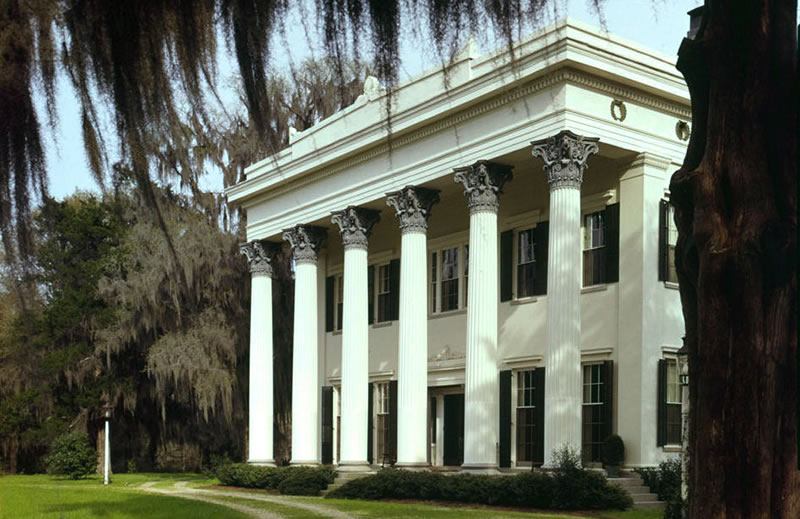
S.C. Encyclopedia | In the seventeenth century the term “plantation,” which formerly referred to any colonial outpost, evolved to refer specifically to large agricultural estates whose land was farmed by a sizable number of workers, usually slaves, for export crops. Englishmen initially created plantation societies in the West Indies, and in the 1670s South Carolina became a northern extension of this empire.
Plantations distinguished themselves from smaller farms not only by the sheer size of their landholdings and workforce but in other ways as well. There was a distinct separation between owners, overseers (managers), and the labor force. Evidence of this separation could be found in plantation housing patterns. Laborers were housed in often shoddy, crowded cabins clustered in a village or “street” at some remove from the owner’s residence. While plantation “big houses” were mostly modest affairs, they sometimes reached uncharacteristic levels of opulence. These more elaborate residences became fixtures in an enduring plantation mythology. The Georgian and Greek-revival mansions popularized in romantic fiction were more the exception than the rule.
An additional defining element of plantations was their focus on one commercial crop. Although South Carolina planters grew a little tobacco in the early years, rice became the colony’s most important staple, and in the years prior to the Revolutionary War, a full-scale plantation culture worked by African slaves emerged along the rivers of the Carolina Lowcountry. The success of rice culture was due in large part to the agricultural skills of the slaves, many of whom hailed from rice-growing regions of Africa. An innovative development in rice culture was tidal irrigation. Water was drawn on and off the crop through an elaborate system of dams, canals, and gates. The landscape was dramatically altered, profits soared, and rice planters became some of the wealthiest people in North America. Planters typically divided their time between their country seats and residences in “town,” moving to Charleston, Georgetown, or Beaufort for a winter social season and relief from the threat of malaria in summer.
The plantation system, in a modified form, spread inland, with cotton fueling the expansion. In the early 1800s cotton culture was lucrative, and many planters plowed their profits into acquiring more land and slaves. Thus, medium-sized farms could grow into plantations within a few years. By 1820 South Carolina was producing more than half the nation’s total output of cotton. Although “King Cotton” continued to rule the state’s economy in the antebellum decades, the center of cotton culture in America gradually moved west into Georgia, Alabama, Mississippi, Arkansas, and Texas.
The North’s opposition to the continued expansion of slavery was the primary factor compelling South Carolina’s secession from the Union, which set in motion the Civil War. Southern defeat resulted in the emancipation of the slaves and profound changes in southern agriculture. A common misconception is that when slavery ended, the plantation system collapsed. In reality, plantations were defined more by the size of their workforce than the status of the workers. Many South Carolina plantations survived the postwar years in a modified form dubbed “fragmented plantations” by geographers. These surviving plantations differed from antebellum properties in important ways. Sharecropping and tenantry replaced slavery as a labor system, and laborers were disbursed across the property rather than concentrated in a central location. Despite this reconfiguration brought about by the end of slavery, many freed people noticed little difference between their former and current living standards. Indeed, they frequently continued to live and work on the property of their former masters.
From the 1870s through the 1890s, southern agriculture entered a long decline and in most cases never regained antebellum levels of prosperity. South Carolina plantations met a variety of fates. As taxes and maintenance costs outpaced profits, many properties were sold off piecemeal by descendants unable to maintain them. But from the fertile soil of others, emblems of the New South sprang forth. Wealthy northerners purchased many former rice plantations in the late nineteenth and early twentieth centuries, transforming them into hunting preserves. Since the 1970s other former rice plantations have become upscale housing developments and golf communities. Further inland, abandoned plantation lands have frequently been harvested for their timber rather than cotton. Due to preservation and restoration efforts, however, in the early twenty-first century some 150 antebellum plantation houses remained in the Lowcountry alone, and these estates, still an evocative symbol of the Old South, continued to be a powerful draw for the state’s tourist industry.
— Excerpted from an entry by Robert Stevens. To read more about this or 2,000 other entries about South Carolina, check out The South Carolina Encyclopedia, published in 2006 by USC Press. (Information used by permission.)
ABOUT STATEHOUSE REPORT
Statehouse Report, founded in 2001 as a weekly legislative forecast that informs readers about what is going to happen in South Carolina politics and policy, is provided to you at no charge every Friday.
- Editor and publisher: Andy Brack, 843.670.3996
- Statehouse correspondent: Lindsay Street
More
- Mailing address: Send inquiries by mail to: P.O. Box 22261, Charleston, SC 29407
- Subscriptions are free: Click to subscribe.
- We hope you’ll keep receiving the great news and information from Statehouse Report, but if you need to unsubscribe, go to the bottom of the weekly email issue and follow the instructions.
© 2018, Statehouse Report. All rights reserved.


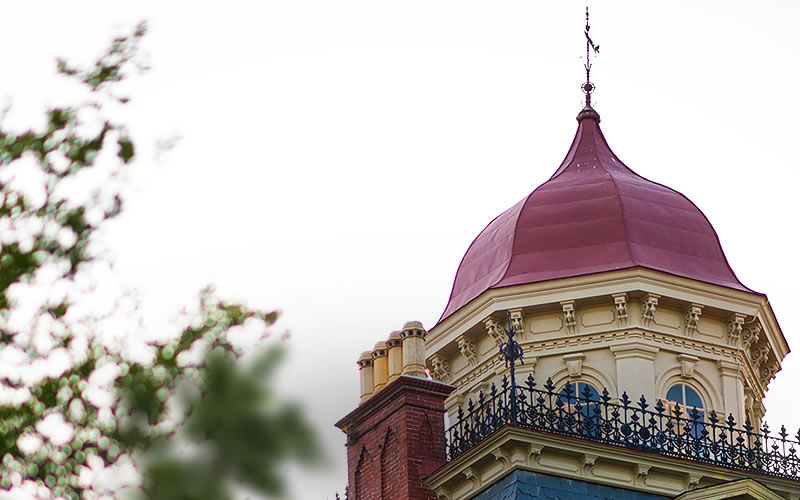













 We Can Do Better, South Carolina!
We Can Do Better, South Carolina!